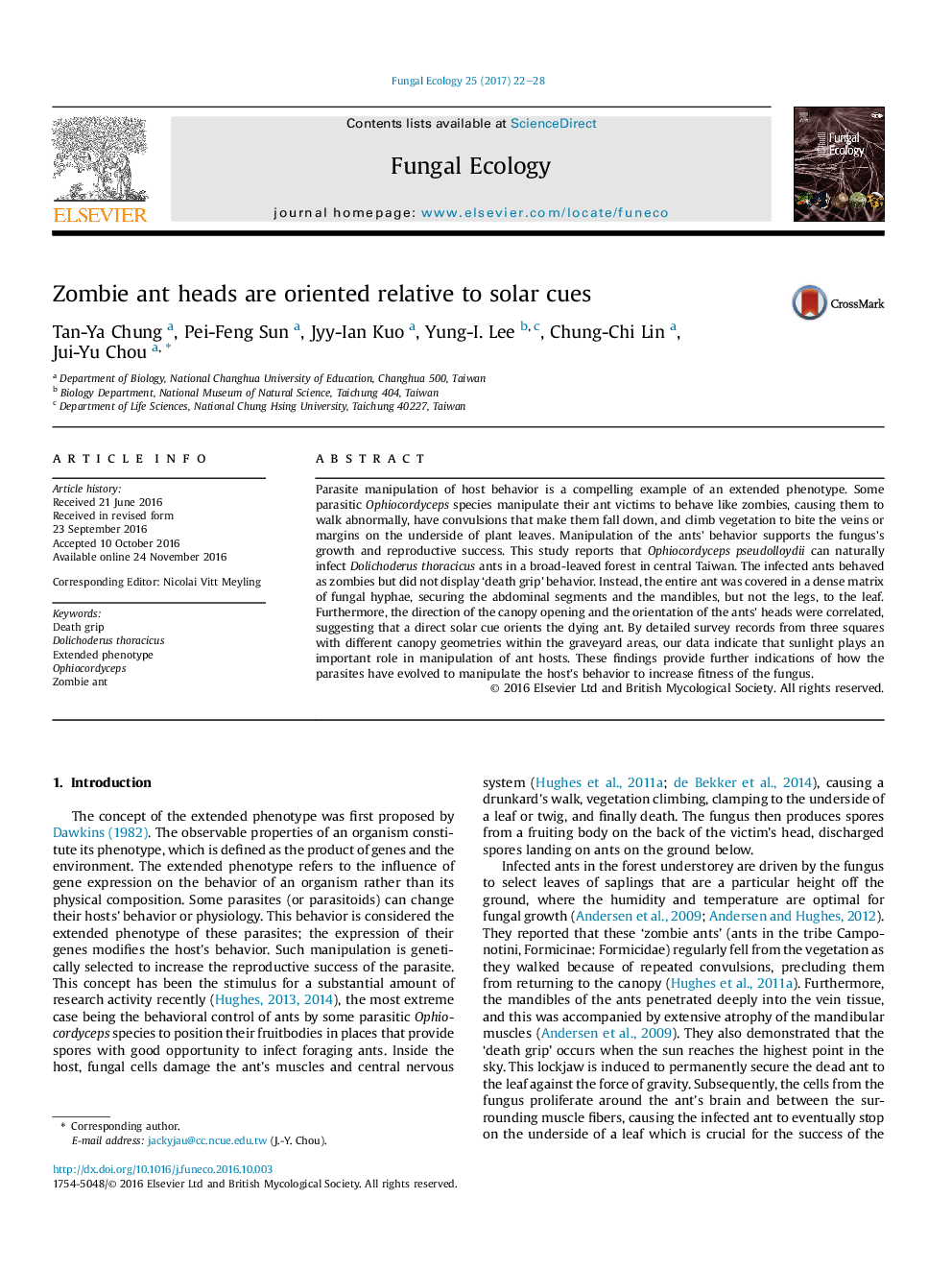| Article ID | Journal | Published Year | Pages | File Type |
|---|---|---|---|---|
| 5517704 | Fungal Ecology | 2017 | 7 Pages |
â¢The fungus Ophiocordyceps pseudolloydii infects Dolichoderus thoracicus ants in Taiwan.â¢Infected dead ants were located on undersides of leaves and attached by fungal hyphae.â¢Canopy openings and direction of sunlight may influence orientation of zombie ants' heads.â¢The sun plays an important role during the infection process of zombie ant fungus to manipulate ant hosts.
Parasite manipulation of host behavior is a compelling example of an extended phenotype. Some parasitic Ophiocordyceps species manipulate their ant victims to behave like zombies, causing them to walk abnormally, have convulsions that make them fall down, and climb vegetation to bite the veins or margins on the underside of plant leaves. Manipulation of the ants' behavior supports the fungus's growth and reproductive success. This study reports that Ophiocordyceps pseudolloydii can naturally infect Dolichoderus thoracicus ants in a broad-leaved forest in central Taiwan. The infected ants behaved as zombies but did not display 'death grip' behavior. Instead, the entire ant was covered in a dense matrix of fungal hyphae, securing the abdominal segments and the mandibles, but not the legs, to the leaf. Furthermore, the direction of the canopy opening and the orientation of the ants' heads were correlated, suggesting that a direct solar cue orients the dying ant. By detailed survey records from three squares with different canopy geometries within the graveyard areas, our data indicate that sunlight plays an important role in manipulation of ant hosts. These findings provide further indications of how the parasites have evolved to manipulate the host's behavior to increase fitness of the fungus.
